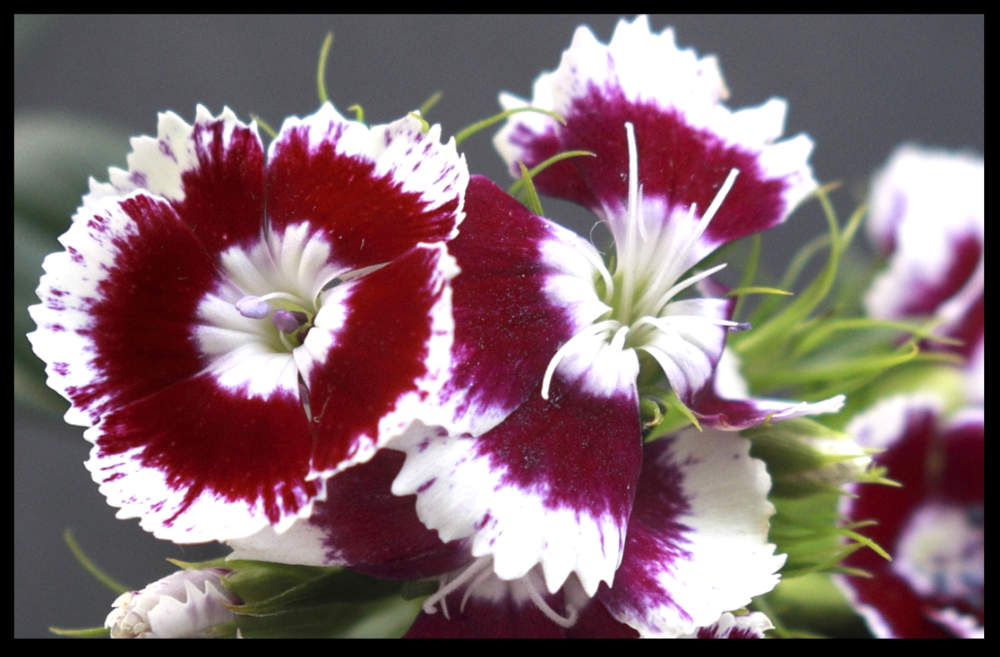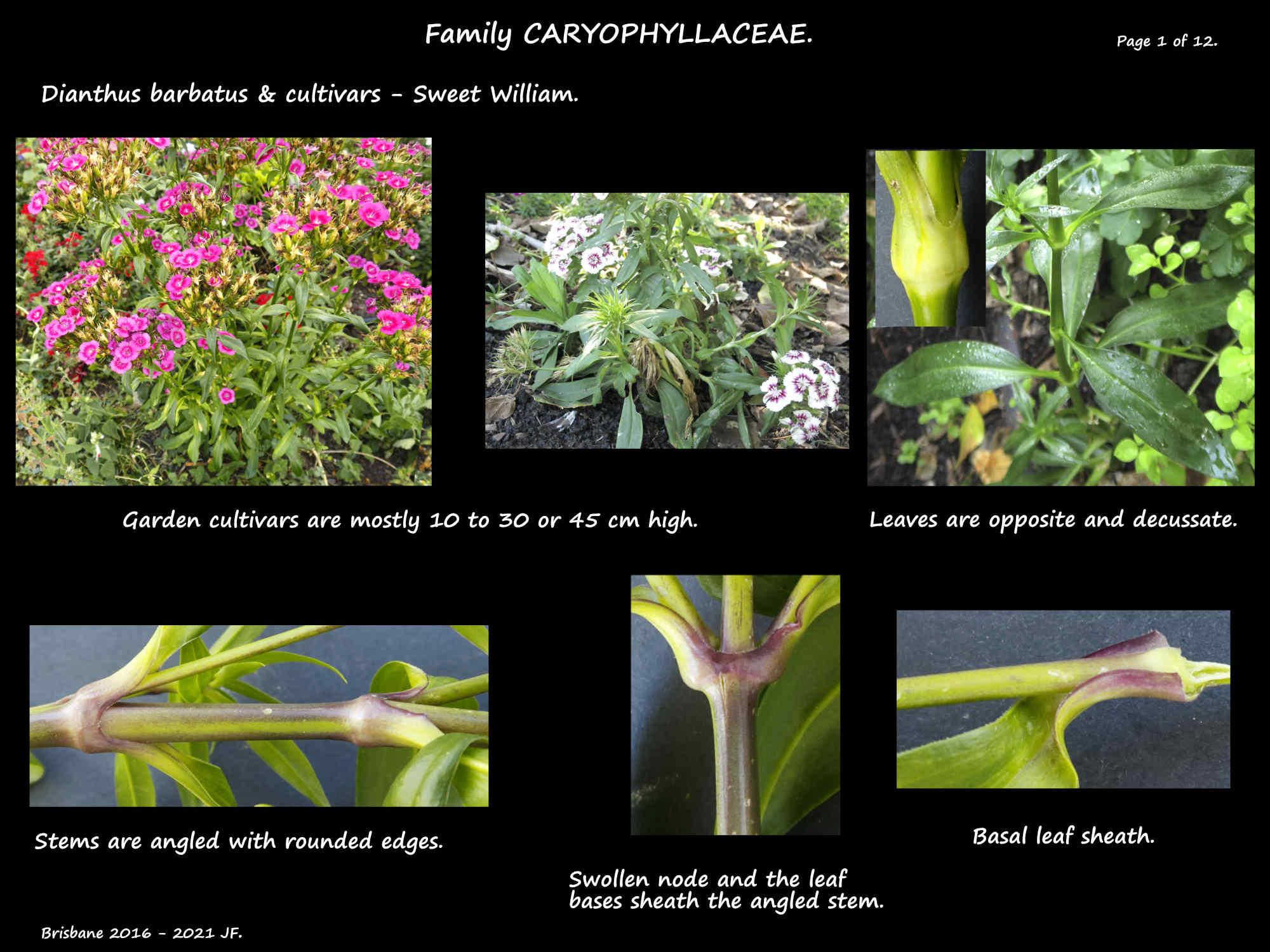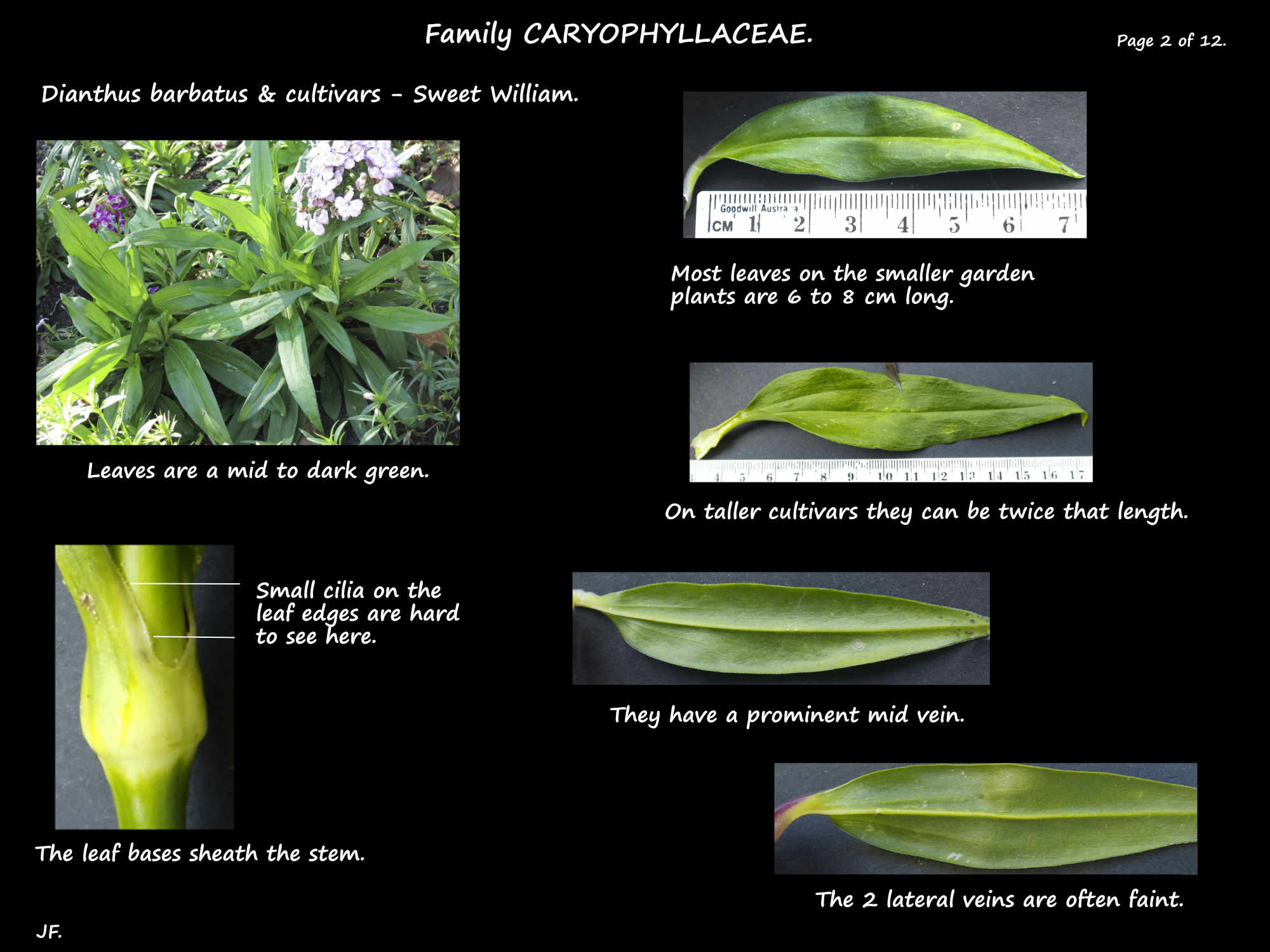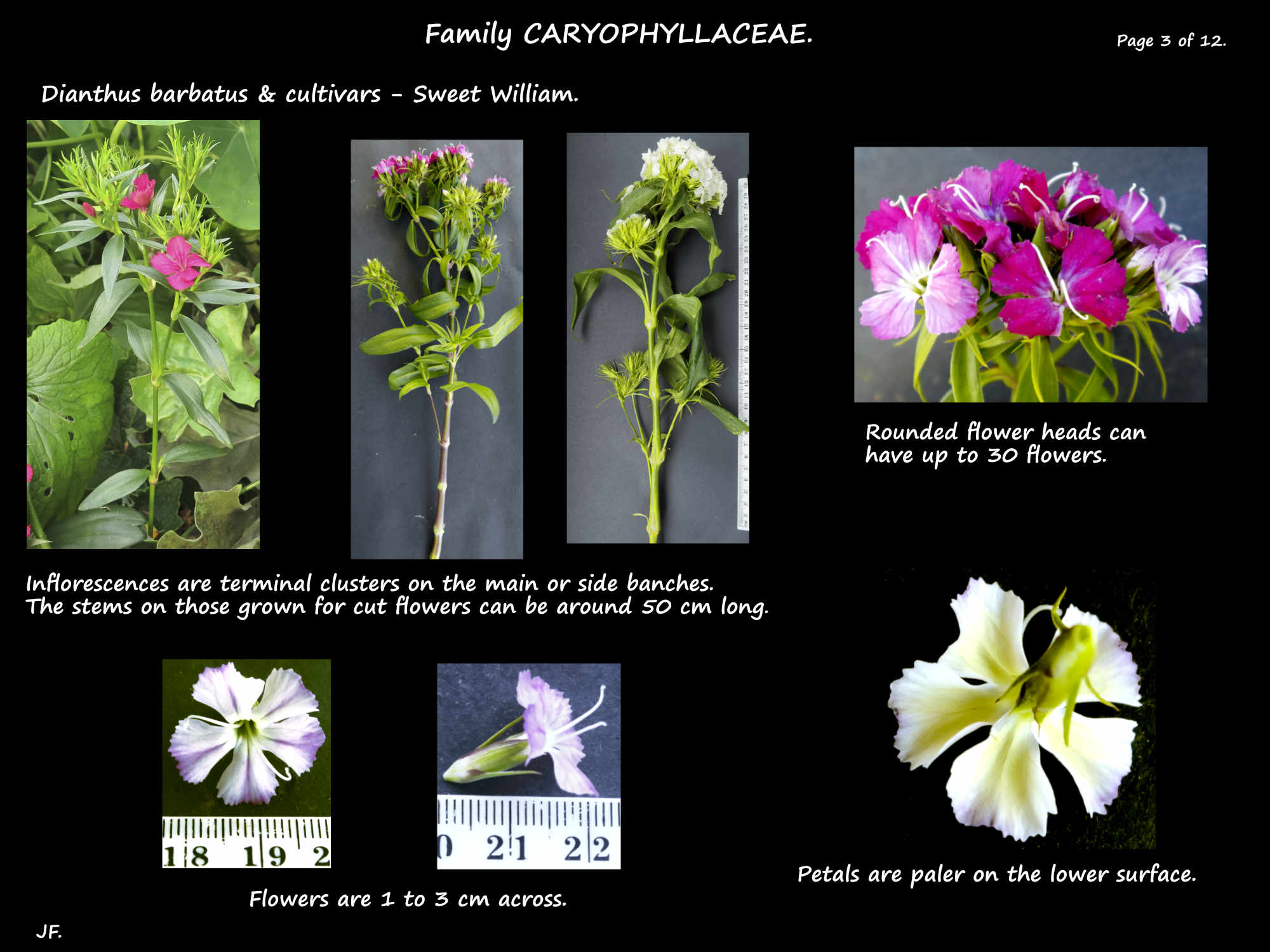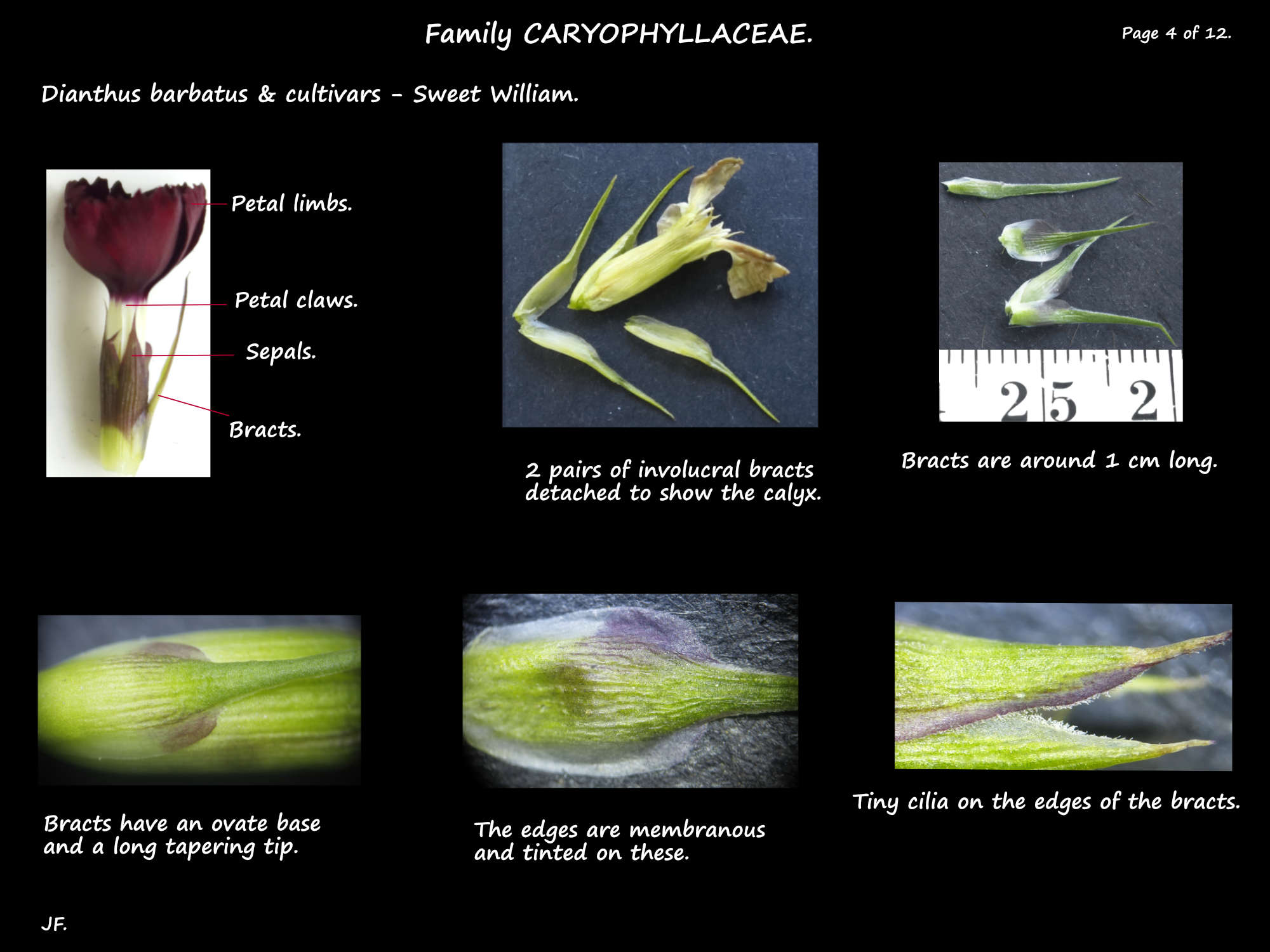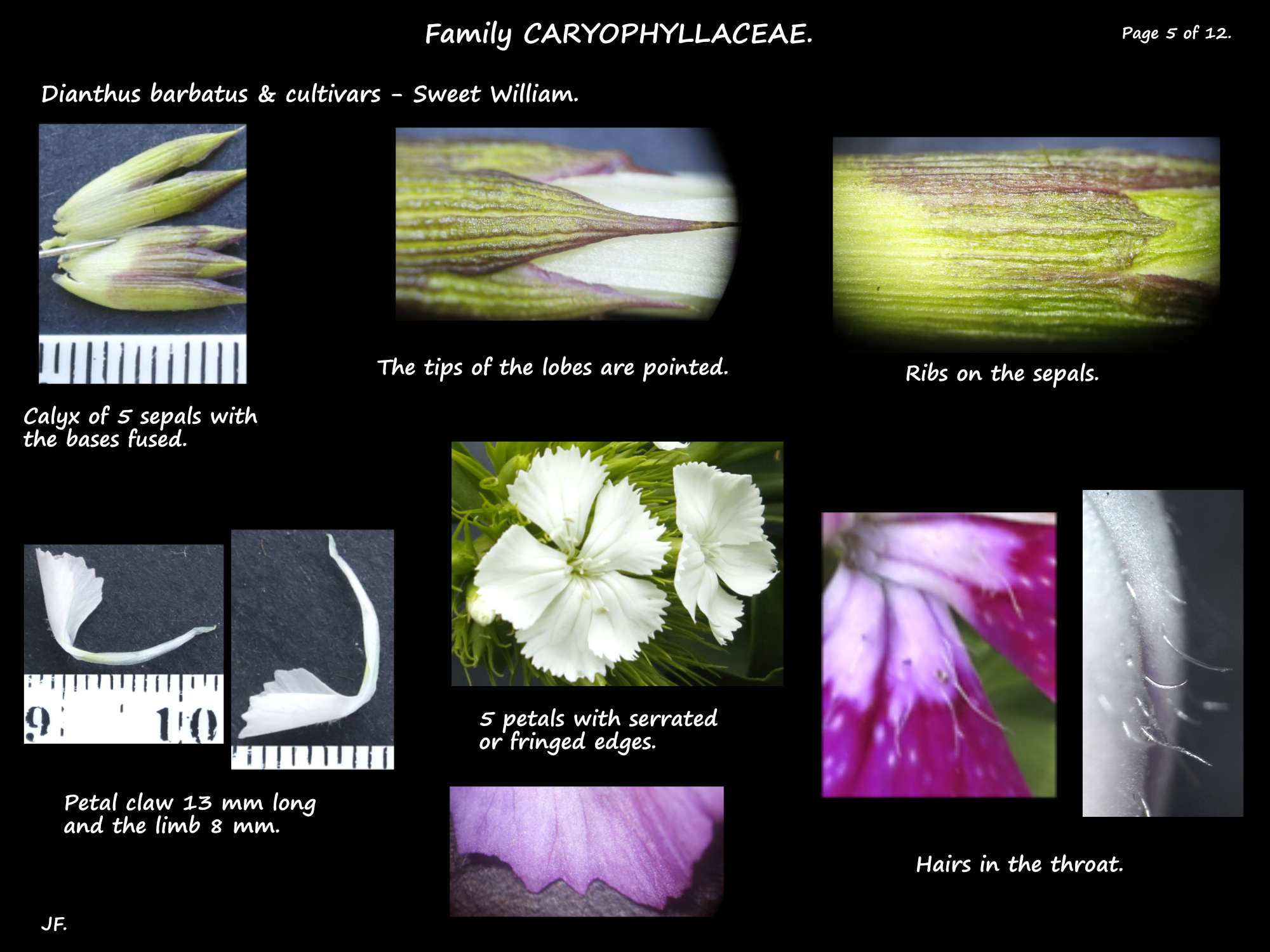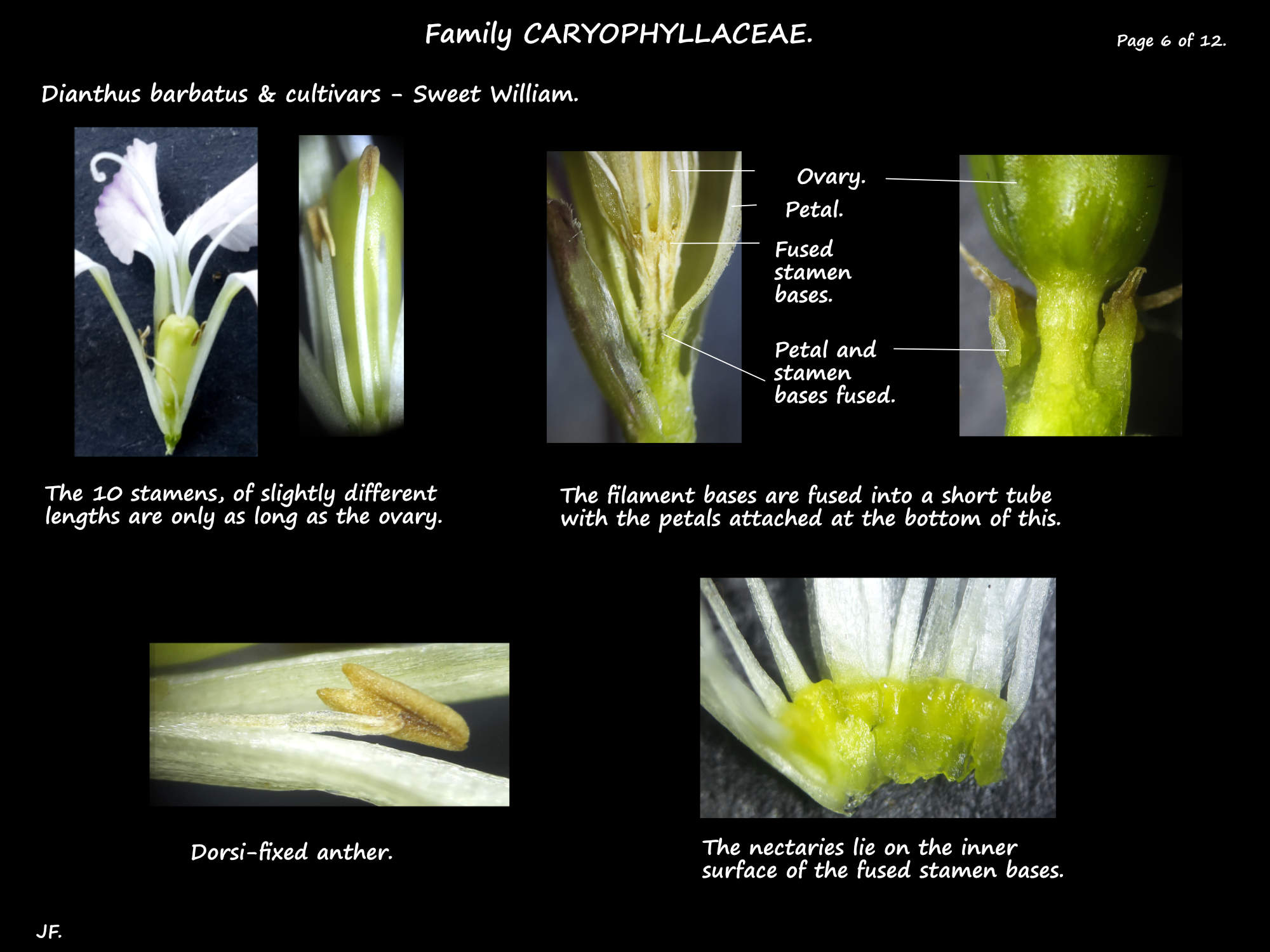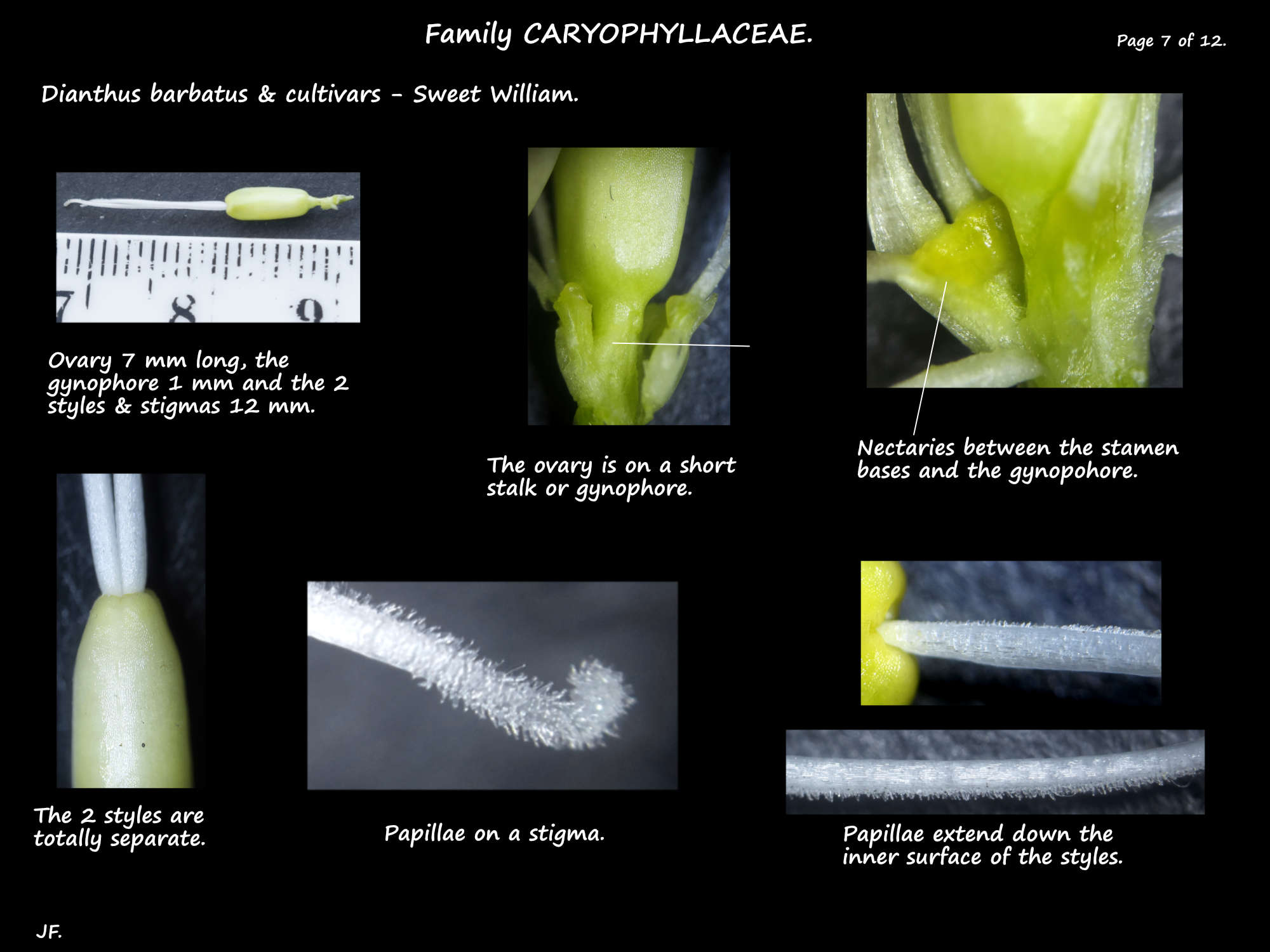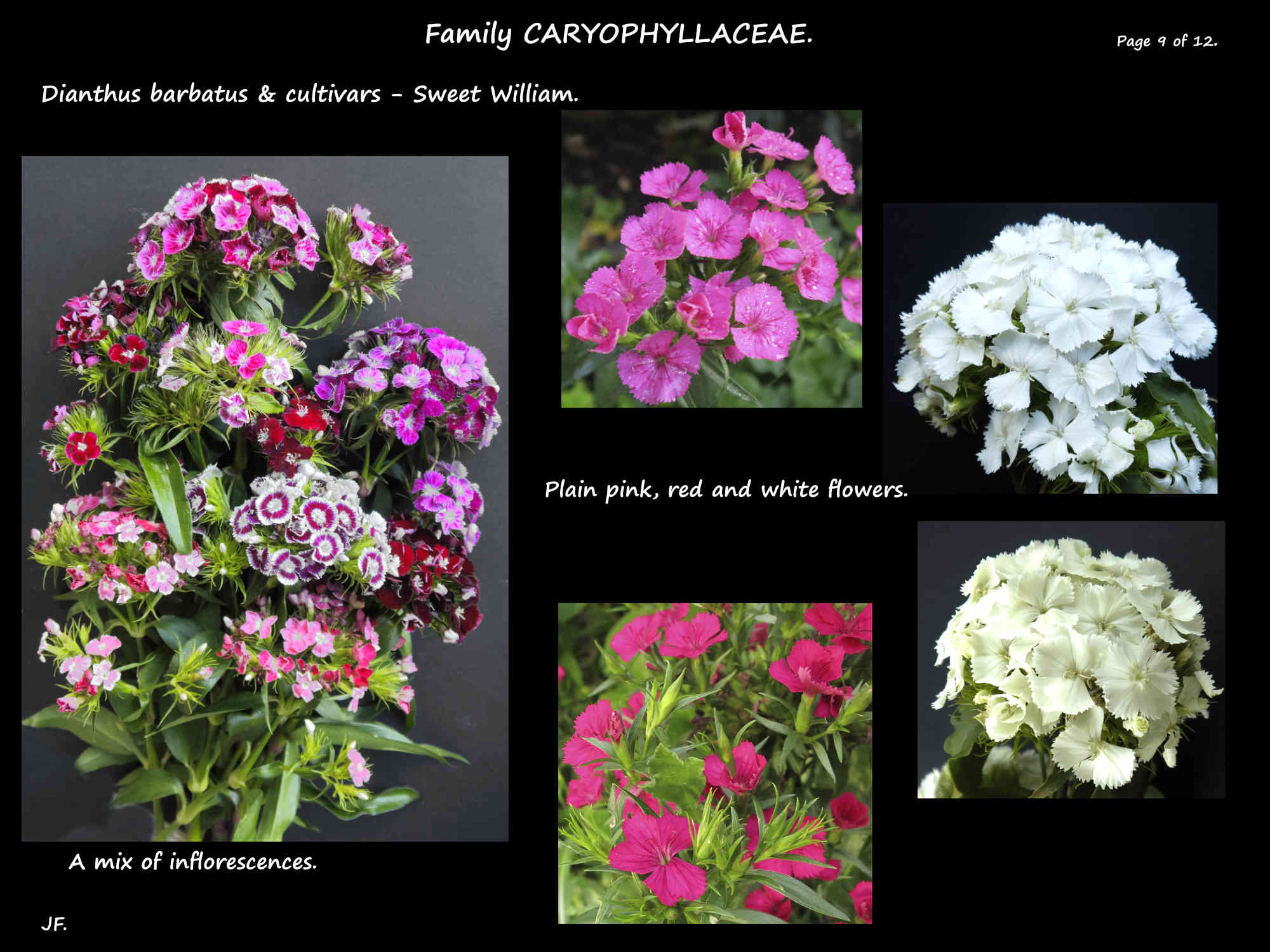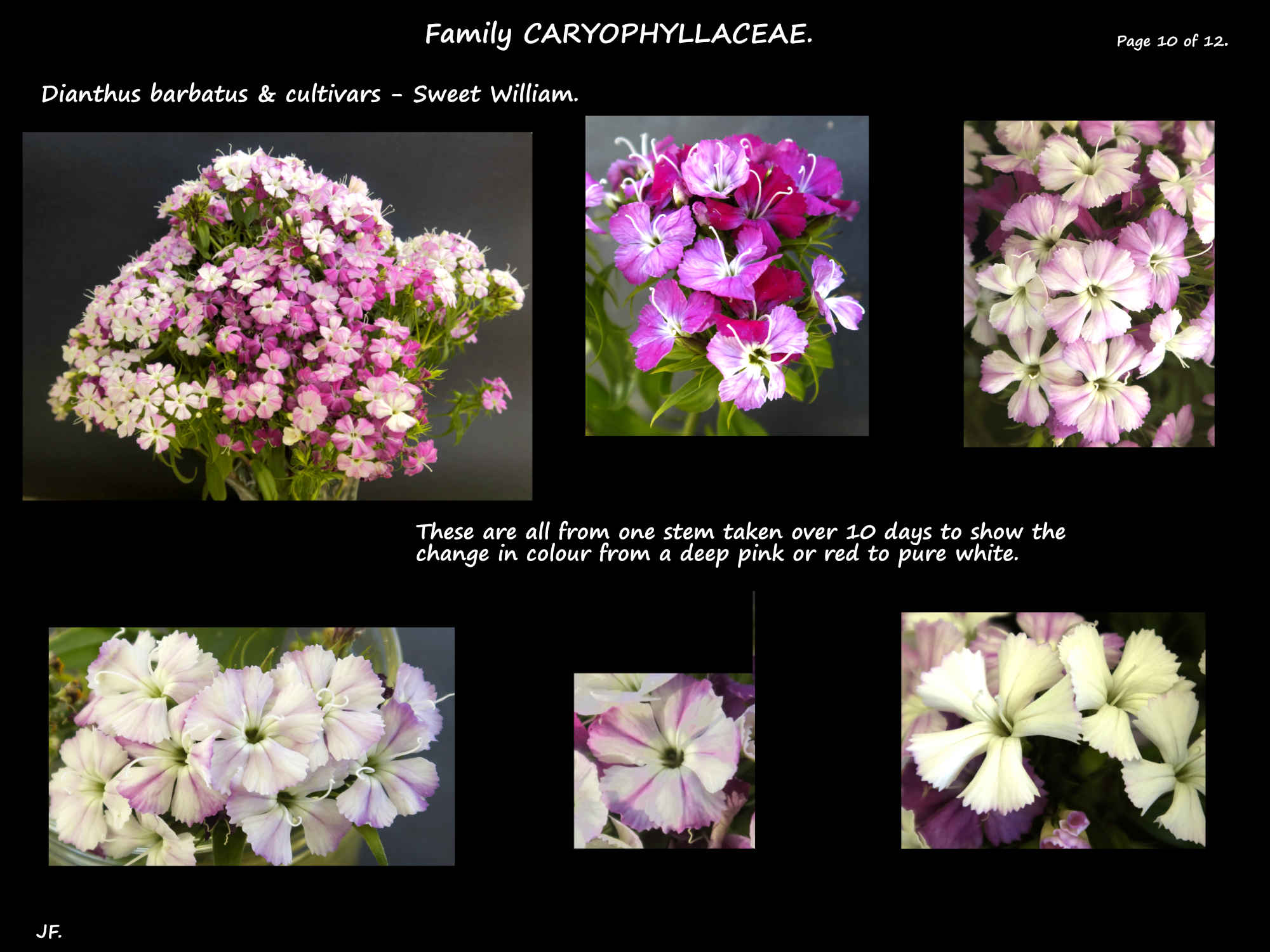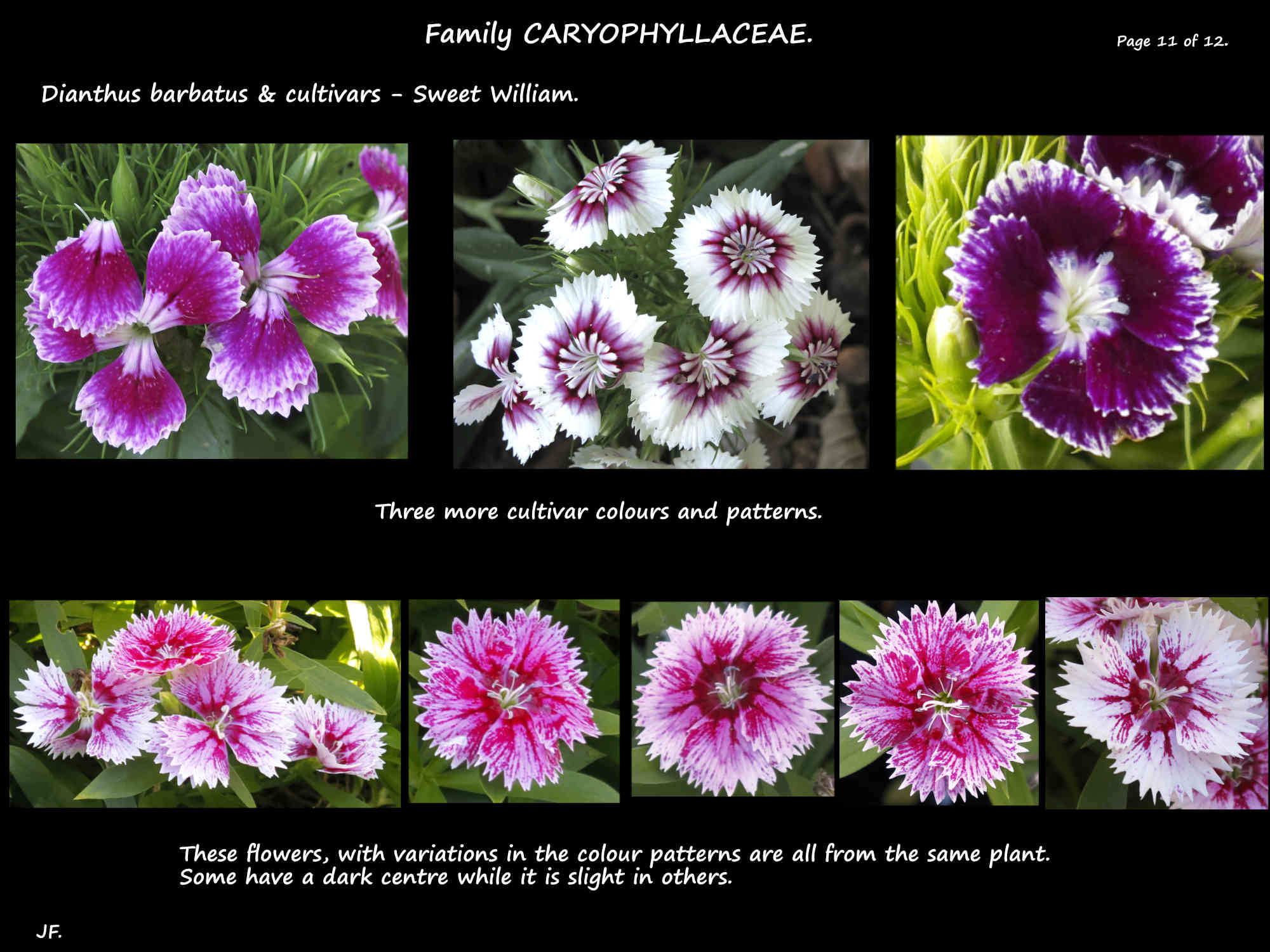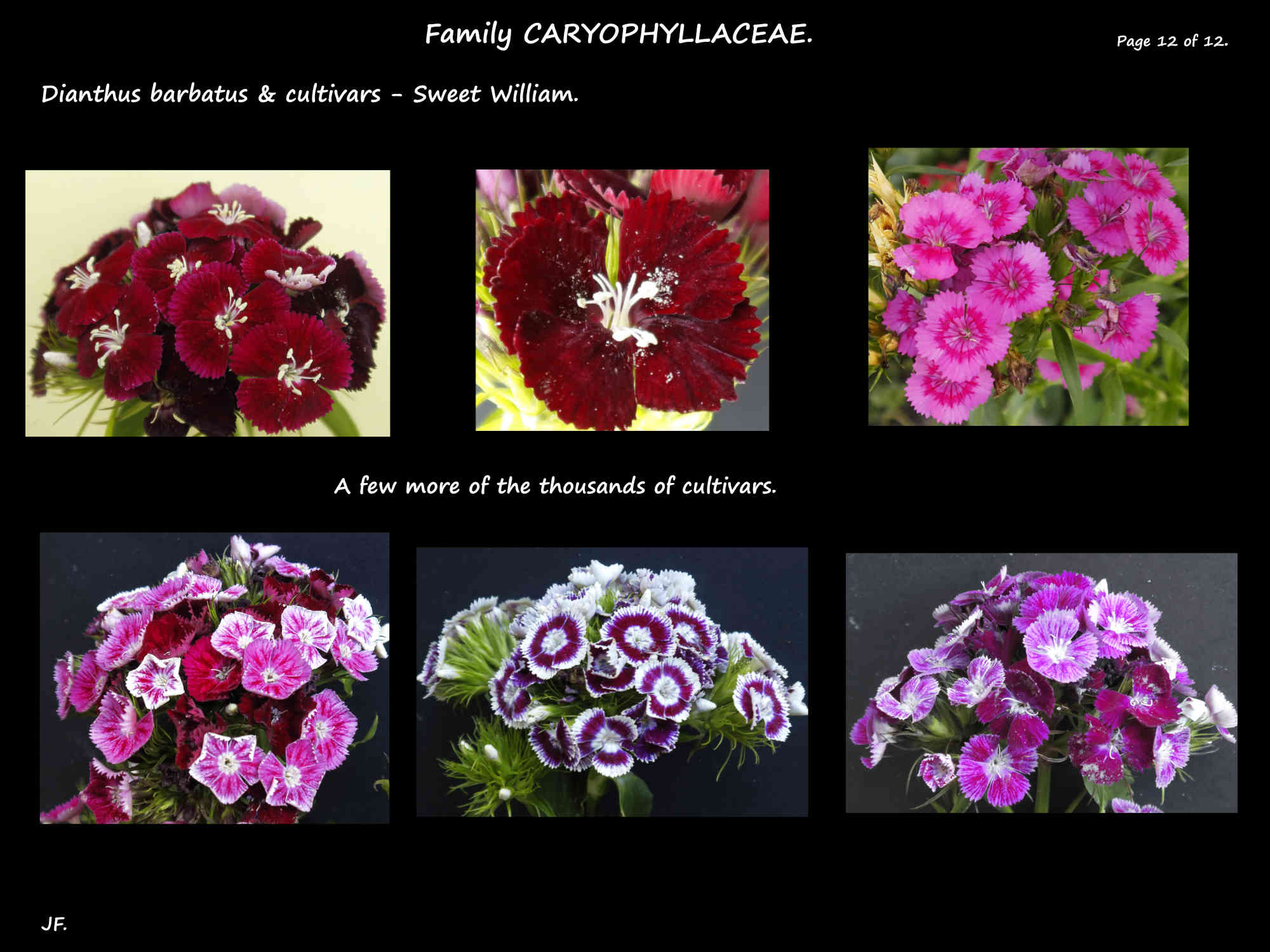Dianthus barbatus & its cultivars.
Sweet William is in Family Caryophyllaceae.
Dianthus barbatus ssp. barbatus is seen as a synonym and as a subspecies.
Some species plants and the many hybrids and cultivars are commonly seen in gardens and as cut flowers.
They are erect herbaceous perennials with slender rhizomes.
Horticulturally they can be divided into dwarf varieties from 10 to 30 cm high, medium from 30 to 45 cm
and tall from 45 to 90 cm although some can be more.
The stems are smooth, 4-angled, with swollen nodes and they may branch.
Stems have 4 to 10 pairs of opposite, decussate leaves 4 to 8 cm long and 1 to 2 cm wide.
There may be a short or no petiole and the bases sheath the stem.
The blade can be lanceolate, oblong or elliptic with a pointed tip.
The basal leaves are slightly different from the stem leaves.
Leaves are green and the edge may be smooth or have short pointed cilia.
Inflorescences are typically a dense, rounded terminal cluster up to 12 cm wide.
There can be up to 30 flowers that are 1 to 3 cm across.
There are leaf-like bracts some only 1/3 the length of the calyx and others longer than it.
They have an ovate base and a long tapering tip.
The sides are membranous and the edges have tiny teeth.
The bases of the 5 sepals are fused forming a tubular calyx 1 to 2 cm long.
The triangular to linear lobes have pointed tips.
The calyx is ribbed and has no hairs.
The (4) 5 petals have a long clawed base that has 2 longitudinal ridges on the inner surface.
The ovate limb is around 5 to 10 mm long and the edge is fringed or serrated.
There are a few simple hairs at the near the base of the inner surface.
Cultivars come in semi-doubles and doubles.
The species flowers are red with a white base.
Species and cultivars can be a single colour or bicoloured.
They may have bands, lines, flecks or spots of a different shade or colour.
There are 10 stamens with dorsifixed anthers.
The elongated superior ovary is on a short stalk or gynophore.
The single locule holds numerous ovules with free central placentation.
There are 2 long curved linear styles.
The brown capsules, around 1 cm long, split into 4 valves.
The blackish ovoid seeds are flattened.
J.F.
